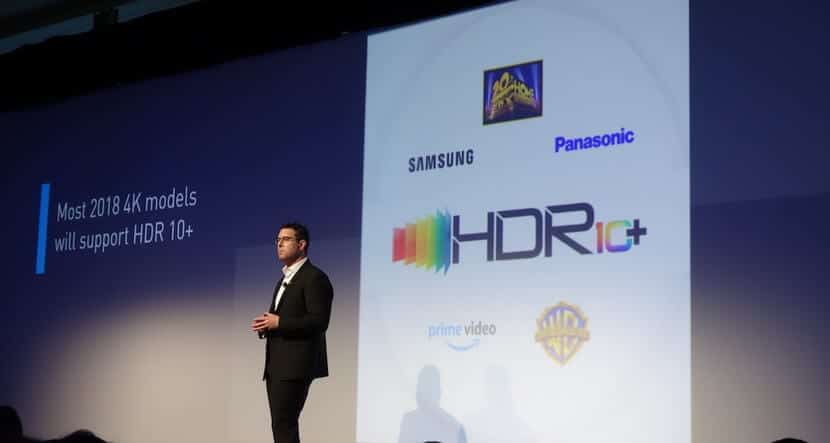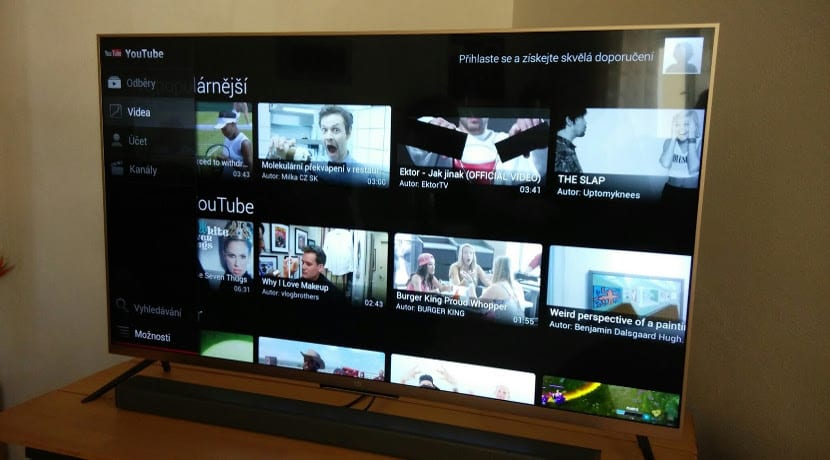
The time has come to change TV, And it is that despite the fact that at the design level they have been stagnant for a good handful of years, the reality is that technology has improved dramatically in the last five years, much of the blame is on the arrival of intelligent reproduction systems and companies offering higher quality streaming content like Netflix.
So when we evaluate the purchase of a new television we find the resolution mess, and now a new challenge, HDR. There are different varieties of HDR, each with its capabilities but all with the same essence, let's see how they differ.
First thing: What is HDR?
The High Dynamic Range or HDR In acronyms it is a standardized system that is intended by algorithms and the variation of colors with the intention of granting the maximum realism to the image we are seeing. In many cases, the films are excessively darkened, or the colors are too blurred, this is because the panel is not adjusting the information that reaches the pixels well and tries not to make a sudden variation of color in the same image. With HDR what we achieve is a greater depth in the black and white tones, increasing the contrast and of course also increasing the number of colors that are displayed at the same time.

Improve contrast It allows us to observe in greater detail some aspects of the film that in a standard system go unnoticed, as we have said before, when there is excessive darkness or just the opposite. Increasing the colors what is achieved is to provide endless colors, approximately one hundred times more in the same frame than a panel without HDR, which makes the images appear much more vivid and the colors stand out more, thus assimilating to the colors of life real.
Why are there different types of HDR?
We are faced with a question of marketing, brands want to differentiate themselves from the rest by assigning small variations to the HDR offered by their panels, and thus calling it in a more spectacular way that appears to be better. But… How many types of HDR are there? Let's take a look at the most frequent ones and their differentiating characteristics:

- HDR10 - This is the most popular HDR system, the one found for example in the vast majority of televisions and monitors. Thanks to HDR10 we can enjoy a luminance (for contrast) of 1000 nits, and a color depth (to increase the palette) of up to 10 bits.
- Dolby Vision - This HDR system is used in some high-end mobile devices, available on Netflix and in the high-end televisions of the South Korean firm LG. Thanks to Dolby Vision we have a maximum of 10.000 nits and a color depth of 12 bits. However, this technology is currently ahead of what hardware offers, since despite offering such high image fidelity, the reality is that almost no panel gives us the opportunity to enjoy it even if it has this technology, for so the differences with HDR10 are minimal.
- HDR1000 - This HDR system is generally used by Samsung, however it is actually taking advantage of HDR10 technology with improved brightness and color adjustments via software.
- HLG or Technicolor - It is an HDR system used by some television networks, which seems to have its days numbered.
When we find a television that has one or more of these nomenclatures, It does not mean that all systems are different, but that it is compatible with a video source that takes advantage of these capabilities, for example, an iPhone X is capable of offering HDR10 content as well as Dolby Vision depending on the video provider.
How can I view content with HDR capabilities?
The fundamental thing is to have a television that has integrated HDR technology, the vast majority of Samsung or LG mid-range televisions with 4K resolution already have HDR technology so that we can fully enjoy their contents, therefore, around of 600 euros we will have good televisions with HDR. The other key point is the content provider, there are many movies that are available on Blu Ray that have HDR, whose label will be referenced on the package, however, the most popular provider of content in HDR or Dolby Vision is precisely Netflix, almost all his premieres or famous series like House of Cards are already offered with these capabilities. For his part Amazon Prime Video It also offers HDR content, an example is its series Grand Tour.
YouTube is the most typical free and affordable provider with HDR and 4K capabilitiesHowever, we have hardware systems that will also allow us to enjoy high dynamic range, an example is Microsoft consoles, both the Xbox One like the new Xbox One X. For its part, Sony, which is usually a pioneer in this type of technology, also includes HDR10 both in the PlayStation 4 as on the PlayStation 4 Pro, so today, there are many possibilities that you have access to HDR content, but the fundamental thing is that you get a television that has enough capacity. Personally, the tests carried out with Samsung's mid-range TVs are the ones that have given us the best experience regarding HDR10 technology and its capabilities.
I have it clear, now ... What HDR do I buy?
Here you must assess many things, especially the quality-price of the television or monitor you purchase. At the TV level it is important that if you are going to buy it with 4K resolution, you enjoy at least one Smart TV system (the best ones are LG, Samsung and Sony) that allows you to easily access YouTube, Netflix and other providers, this is how more you are going to enjoy HDR. If you find yourself overwhelmed, don't forget that even though Dolby Vision offers a spectacular result, it is more than enough that you buy a panel with HDR10 like the mid-range of Samsung or LG.